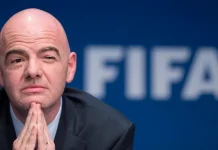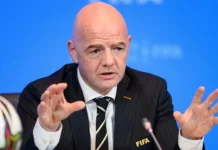The 2022 Qatar FIFA World Cup that was touted to be a legacy in the annals of sport is still attracting international attention more than two and half years after the event, not through its sporting feats, but through the human sacrifice upon which its glory has been based. The event’s preparations depended on an immense migrant workforce, constituting nearly 95% of Qatar’s total labor force. It came in the form of most of these workers as South and Southeast Asians (India, Bangladesh, Nepal, and the Philippines).
Numerous probes by human rights organizations have since found out that these workers were subjected to systematic mistreatment. Amnesty International and the Business & Human Rights Resource Centre reported systematic pay theft, dangerous conditions and involuntary debt labour. The recruitments were mostly characterized by expensive fees with 93 per cent of the surveyed workers stating that they went into debts to get hired. Moreover, 36 employees did not get an extra rate of pay though having been working overtime and over one-fourth of them were receiving the wages less than their agreement.
Although there was a record of $ 7.5 billion made by FIFA in the tournament, the people who had built the stadiums and infrastructure failed to enjoy such proceedings. Such a grim juxtaposition of gains and pains has also added pressure on FIFA to reduce the history of watching abuse employed in hosting its most important occasion.
Persistent Structural Abuses And Ineffective Reforms
At the run-up to the 2022 event, Qatar announced a slew of legislative changes to serve the purpose of abolishing the infamous kafala system of sponsorship. Nevertheless, the proofs of 2024 and 2025 support the assumptions that these changes are still cosmetic in nature. It was reported that identity documents were still being seized, mobility between workplaces was limited, and the means of legal recourse were not broad.
Workers report feeling lost even after the final whistle has been blown. Then that tourism ended; hence, a lot of grievance mechanisms went into silences, including FIFA helpline. Laborers who were accused of mistreatment had no corresponding institutional remedy to turn to because the institutions that were supposed to address compensatory strategies were either not developed or ineffective.
Health and safety violations were also rampant. Independent monitors estimate hundreds of preventable injuries and deaths occurred during the infrastructure phase of the tournament. The absence of transparency in disclosing these figures has raised further concern over the accountability of both FIFA and Qatari authorities.
FIFA’s Complicity And Responsibility
The core of the criticism now turns toward FIFA’s complicity. By choosing Qatar, a country with its history of the failure to respect labor rights, as a host without binding protections, FIFA facilitated an arena in which abuse would thrive. According to the supporters of human rights, the oversight mechanisms of FIFA were unsatisfactory and unstable and had not taken any effective measure in protecting the workers at any time.
In reaction, FIFA has been attempting to justify its position by referring to the incentive of reform and its attempt to press better working conditions. However, analysts believe that passive advocacy is inadequate when the organization possesses a lot of leverage on host countries. This is compared with the vulnerability of the labor force contracted by FIFA to undertake work associated with the tournament with profits the organization enjoyed in terms of sponsorship, broadcasting and branding.
The greater issue is that there is a trend of neglect of labor rights in various host countries. Such codification of exploitation highlights one of the pathologies in the international governance of sport, commercial and political interests take precedence over ethical concerns.
Stakeholder Reactions And Developer Calls
Civil society groups have not remained silent. Amnesty International noted that while Qatar’s legal adjustments are a step forward, they are undermined by inconsistent enforcement and an absence of accessible remedies. Human Rights Watch echoed this sentiment, attributing responsibility not only to national authorities but to FIFA’s structural inertia and prioritization of image over integrity.
The Qatari government continues to claim progress, citing labor inspections and legislative milestones. However, the lived experiences of workers suggest a wide gap between policy and practice. Post-World Cup, many migrant laborers report decreased job security, intimidation when filing complaints, and deteriorating access to essential services. These conditions diminish the credibility of state-led reform narratives and signal a need for external accountability mechanisms.
This person has spoken on the topic: Eric Friedman noted that
“FIFA’s failure to prioritize migrant workers’ rights reveals the hidden human cost behind global sport—where vast profits mask systematic abuses needing urgent and sustained corrective action.”
Global Implications And The Path Forward
The FIFA labor exploitation scandal presents a turning point in discussions about global sports governance. More than ever, fans, players, civil society, and even some corporate sponsors are demanding accountability and transparency. The reputational fallout from the Qatar tournament continues to influence public opinion and policymaking in sports.
The awarding of the 2030 Men’s World Cup to Saudi Arabia has reignited controversy. Critics draw parallels between Qatar’s labor history and Saudi Arabia’s ongoing concerns regarding labor rights and civil liberties. This development has underscored the urgent need for enforceable human rights benchmarks as prerequisites for hosting international events.
Global labor organizations now advocate for binding requirements on labor practices to be included in all future host agreements. These proposals include independent labor monitoring, transparent grievance systems, and guaranteed worker representation. Crucially, they seek to ensure that mega-events support—not sacrifice—sustainable development and human dignity.
A Call For Structural Change
The example of Qatar exemplifies the extent of exploitative systems that are deeply enrooted in the current world of international sports. Unless there is a basic re-evaluation of priorities in FIFA and the likes of it, there will still be recurring injustices in the future tournaments. To implement change, the responsibility should not only be on the paper but should translate into structural commitments that carry legal effects and are externally measured.
The ratio between spectacle and ethics has to be reconsidered not only at the level of FIFA but also in international sporting organizations. What unites the whole world and makes it celebrate should not be constructed on the basis of marginalized workers. To align sports to the universally acceptable norms regarding human rights, it is necessary to hold all stakeholders, i.e. the governments, corporations and organising committees to a higher standard.
Reminds me of the executives behind FIFA who exploited migrant workers to build the infrastructure in Qatar. Just look at all the deaths/injuries/those with PTSD.
— Elliotte Friedmington (@efriedmington) July 28, 2025
The problem of the migrant workers is not the accessory in the story of the global sport-it is the core. This labor undergoes the infrastructure, hospitality, and logistics of mega-events, wherein those doing the work are frequently low-protection and accommodation with little alternatives. It is both moral and practical imperative to recognize their plight and compensate them (as much as possible), and prevent potential reoccurrences of the same on future workers.
The decision of FIFA to guide this change instead of being reactive or not: will settle more than its institutional credibility. It will mould the legacy of contemporary sport as a justice-bringing mechanism of power, or a mechanism of apathy. In the modern world where the ethical aspects are becoming more and more prominent, the invisible price of spectacle can no longer be overlooked.













